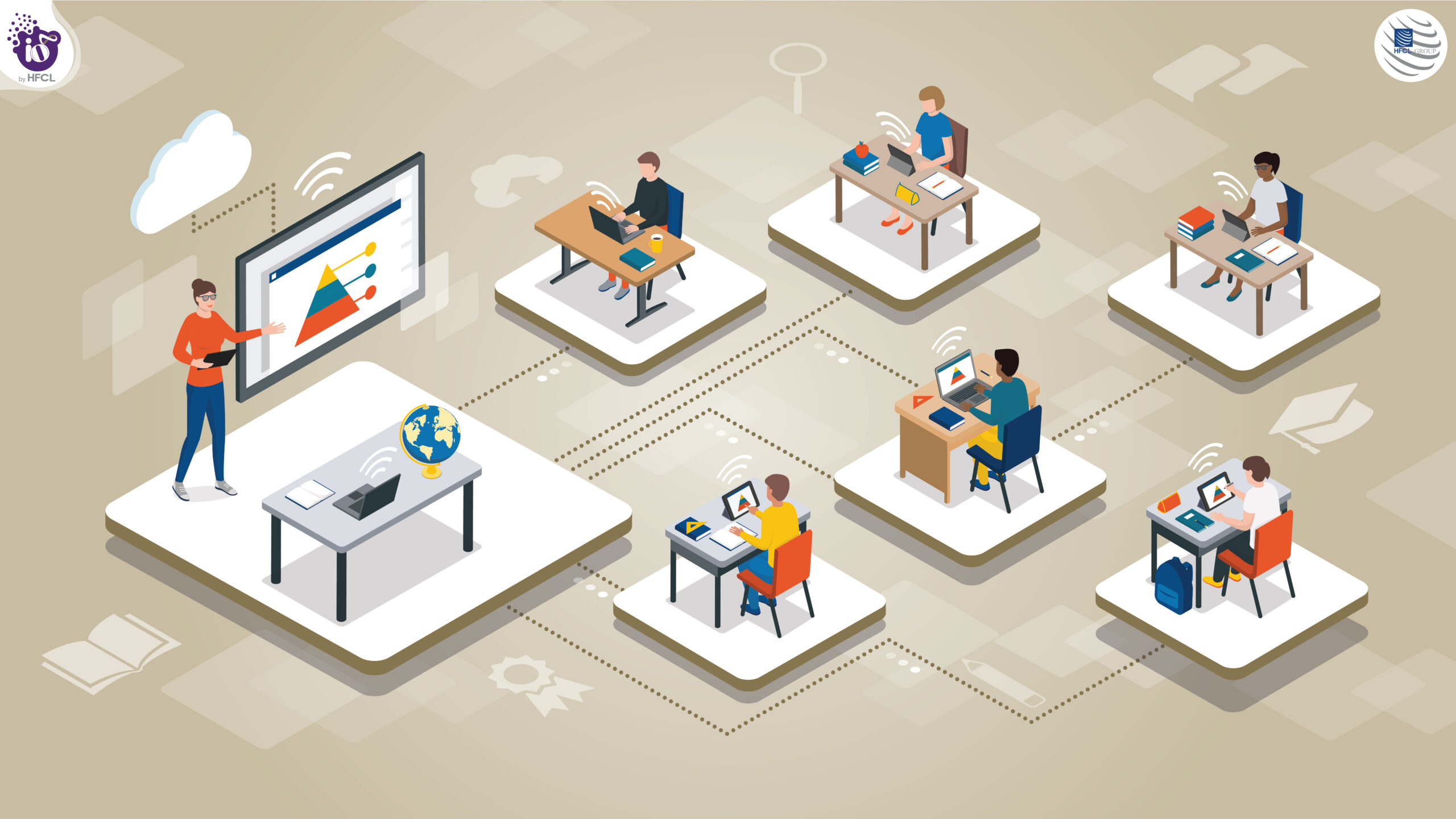BROADBAND IN EDUCATION SECTOR- BRIDGING DIGITAL CANYON
 Digital learning is the quickest growing market in the education industry, with a whopping 900% growth since 2000. – KPMG
Digital learning is the quickest growing market in the education industry, with a whopping 900% growth since 2000. – KPMG
We are going through unprecedented time and Covid-19 Pandemic has directly impacted every sector possible. However, Internet penetration on a global scale has mitigated the catastrophe to a large extent and became an essential tool to communicate for every sector/industry and specifically for education.
The potential of the Internet in the new-age learning models, Hybrid (online + offline) HyFlex (hybrid+ flexible), is giving access to billions of nuggets of information visible online to learners worldwide.
Broadband technologies empower hybrid+ HyFlex learning with a unique teaching experience, knowledge-sharing, pedagogical expertise while transforming the world as the single largest library.
Internet – a road to Connected Learning.
Internet’s value in improving and enhancing the overall learning experience is undisputed, which got further amplified during the pandemic. The growing adoption of online resources bridges education divides, transforms learning, and improves skills for the globalized economy.
Connecting learners with many educational tools, modules, digital libraries, blogs, wikis, podcasts, videos, e-libraries/textbooks, thereby laying a foundation for a more reliable future, is no more far-fetched.
However, the major spin-off here is slow, low, and no connectivity that breaks the rhythm of learning.
Connectivity challenges & way forward with Wi-Fi 6
Wi-Fi 6 is designed to empower the new age of learning, enabling educational institutions to provide campus-wide connectivity with high-speed, secure Internet by boosting device density. So learners, irrespective of their location, can access, learn and explore futuristic experiential learning anytime and anywhere.
For a brief rundown, Wi-Fi 6 boosts overall performance with increased throughput speeds, higher security, improved network congestion, better client capacity, and reduced power consumption.
-OFDMA (Orthogonal Frequency Division Multiple Access) lets multiple devices be supported with Access Points at a lower latency, minimizing contention for channel access between Wi-Fi devices.
-With Beam Forming feature, Access Point detects where the device requesting the data is located and transmits a more localized data stream in that direction, instead of broadcasting data in all directions, leading to improved speed and high-performance.
-MU-MIMO (Multi-user, multiple-input, multiple-output) enables splitting device data into multiple streams for improved Internet efficiency. Channels are split into even smaller chunks so numerous users can experience simultaneous transmissions.
-1024-QAM (Quadrature Amplitude Modulation) allows more bits to be encoded per symbol transmission over the air using the encoding technology. With this data-encoding density boosted up to 25 percent within the same spectrum, it becomes easier to support more devices simultaneously, even if devices are running throughput-intensive streaming or video apps.
Wi-Fi 6 has ensured that connectivity is no longer a barrier to learning while fostering the education sector to handle the unknown, where learning adapts to each child instead of each child trying to adapt to school. – Anand Kumar, GM-Sales (Govt. Account), HFCL Ltd.
Future dictated by Technology-led learning.
Global E-Learning Market to Reach $457.8 Billion by 2026. – Global News Wire
Connectivity is a driver for inclusive and gender-equal learning, employability and livelihoods. The blended learning model will be a ubiquitous component of the education system worldwide. To narrow digital inequalities, Indian Govt has increased the education budget from Rs 104, 278 crores to Rs 93, 274 crores for 2022-23.
Forward-thinking global institutions like the University of Illinois, Harvard, IIT, IIM, MIT, and so forth are investing extensively in building a resilient mechanism of blended education delivery.
At IO by HFCL, we are equipping, enabling, and advancing digital education globally with our range of access solutions to seize once-in-a-generation learning opportunities to leapfrog children and youth into the future they want and deserve.
Epilogue
The education industry aced the path of ‘disruption to recovery’ amid pandemic with broadband Internet, which acted as a catalyst for the digital revolution. It brought a massive transformation in the learning landscape, technological disruptions while meeting the demand for quality education.
At IO by HFCL, we believe pandemic brought the world an opportunity to rethink and restructure education systems globally. Broadband technology emerged as a panacea enabling learners to learn from anywhere, anytime, in any rhythm, and with any means.
With trending Wi-Fi trends such as Wi-Fi 6, 6E, and 7, it would be easier to build an education system that is more resilient and responsive to students’ needs.
Get in touch with IO by HFCL to penetrate new business markets with a robust Internet-connected system to support seamless and affordable connectivity everywhere.
This article is authored by Mr. Anand Kumar, GM-Sales, HFCL Ltd.
